ASX Glossary - C: Difference between revisions
Jump to navigation
Jump to search
No edit summary |
No edit summary |
||
| (One intermediate revision by the same user not shown) | |||
| Line 148: | Line 148: | ||
</head> | </head> | ||
<body> | <body> | ||
<table> | |||
<tr | <tr> | ||
<td class="term"> | <td class="term"> | ||
<a href="https://wiki.alsresume.com/index.php?title= | <a href="https://wiki.alsresume.com/index.php?title=Cabin_pressurization" target="_blank" | ||
style="color: #40E0D0; font-weight: bold; text-decoration: none; cursor: pointer;" | style="color: #40E0D0; font-weight: bold; text-decoration: none; cursor: pointer;" | ||
onmouseover="this.style.color='#ff4f01';" | onmouseover="this.style.color='#ff4f01';" | ||
onmouseout="this.style.color='#40E0D0';"> | onmouseout="this.style.color='#40E0D0';">Cabin Altitude | ||
</a> | </a> | ||
</td> | </td> | ||
<td class="description"> | <td class="description">Cabin altitude refers to the equivalent altitude inside an aircraft cabin, which is regulated to maintain passenger comfort and safety. It is controlled through cabin pressurization systems to prevent hypoxia and discomfort at high cruising altitudes. Typical commercial aircraft maintain a cabin altitude of around 6,000–8,000 feet, even when flying at 35,000 feet, ensuring sufficient oxygen levels and reducing fatigue for passengers and crew.</td> | ||
<td class="image-column"><img src="https://www.alsresume.com/wp-content/uploads/2025/02/Cabin-Altitude.jpg" alt="Cabin Altitude"></td> | |||
<td class="image-column"> | |||
</tr> | </tr> | ||
<tr> | |||
<tr | |||
<td class="term"> | <td class="term"> | ||
<a href="https://wiki.alsresume.com/index.php?title= | <a href="https://wiki.alsresume.com/index.php?title=Cabin_Crew" target="_blank" | ||
style="color: #40E0D0; font-weight: bold; text-decoration: none; cursor: pointer;" | style="color: #40E0D0; font-weight: bold; text-decoration: none; cursor: pointer;" | ||
onmouseover="this.style.color='#ff4f01';" | onmouseover="this.style.color='#ff4f01';" | ||
onmouseout="this.style.color='#40E0D0';"> | onmouseout="this.style.color='#40E0D0';">Cabin Crew | ||
</a> | </a> | ||
</td> | </td> | ||
<td class="description"> | <td class="description">Cabin crew members are responsible for passenger safety, comfort, and in-flight services. Their duties include safety briefings, emergency procedures, first aid assistance, and hospitality services such as food and beverage distribution. They are trained to handle various situations, including medical emergencies and security threats, ensuring a safe and comfortable journey for all passengers.</td> | ||
<td class="image-column"><img src="https://www.alsresume.com/wp-content/uploads/2025/02/Cabin-Crew.jpg" alt="Cabin Crew"></td> | |||
<td class="image-column"> | |||
</tr> | </tr> | ||
<tr> | |||
<tr | |||
<td class="term"> | <td class="term"> | ||
<a href="https://wiki.alsresume.com/index.php?title= | <a href="https://wiki.alsresume.com/index.php?title=Cabin_pressurization" target="_blank" | ||
style="color: #40E0D0; font-weight: bold; text-decoration: none; cursor: pointer;" | style="color: #40E0D0; font-weight: bold; text-decoration: none; cursor: pointer;" | ||
onmouseover="this.style.color='#ff4f01';" | onmouseover="this.style.color='#ff4f01';" | ||
onmouseout="this.style.color='#40E0D0';"> | onmouseout="this.style.color='#40E0D0';">Cabin Pressure | ||
</a> | </a> | ||
</td> | </td> | ||
<td class="description"> | <td class="description">Cabin pressure is the controlled air pressure maintained inside an aircraft to ensure passenger and crew safety at high altitudes. It prevents hypoxia by simulating a lower altitude environment, typically around 6,000–8,000 feet, even when cruising above 35,000 feet. Pressurization systems regulate oxygen levels and air circulation, ensuring a comfortable and safe cabin atmosphere throughout the flight.</td> | ||
<td class="image-column"><img src="https://www.alsresume.com/wp-content/uploads/2025/02/Cabin-Pressure.jpg" alt="Cabin Pressure"></td> | |||
<td class="image-column"> | |||
</tr> | </tr> | ||
<tr> | |||
<tr | |||
<td class="term"> | <td class="term"> | ||
<a href="https://wiki.alsresume.com/index.php?title= | <a href="https://wiki.alsresume.com/index.php?title=Calibrated_airspeed" target="_blank" | ||
style="color: #40E0D0; font-weight: bold; text-decoration: none; cursor: pointer;" | style="color: #40E0D0; font-weight: bold; text-decoration: none; cursor: pointer;" | ||
onmouseover="this.style.color='#ff4f01';" | onmouseover="this.style.color='#ff4f01';" | ||
onmouseout="this.style.color='#40E0D0';"> | onmouseout="this.style.color='#40E0D0';">Calibrated Airspeed | ||
</a> | </a> | ||
</td> | </td> | ||
<td class="description"> | <td class="description">Calibrated airspeed (CAS) is indicated airspeed corrected for instrument and position errors. It provides a more accurate measurement of an aircraft's true aerodynamic performance, especially during different phases of flight. At low speeds and in high angles of attack, errors in indicated airspeed can be significant, making CAS crucial for precise flight planning, performance calculations, and regulatory compliance in aviation operations.</td> | ||
<td class="image-column"><img src="https://www.alsresume.com/wp-content/uploads/2025/02/Calibrated-Airspeed.jpg" alt="Calibrated Airspeed"></td> | |||
<td class="image-column"> | |||
</tr> | </tr> | ||
<tr> | |||
<tr | |||
<td class="term"> | <td class="term"> | ||
<a href="https://wiki.alsresume.com/index.php?title= | <a href="https://wiki.alsresume.com/index.php?title=Camber_(aerodynamics)" target="_blank" | ||
style="color: #40E0D0; font-weight: bold; text-decoration: none; cursor: pointer;" | style="color: #40E0D0; font-weight: bold; text-decoration: none; cursor: pointer;" | ||
onmouseover="this.style.color='#ff4f01';" | onmouseover="this.style.color='#ff4f01';" | ||
onmouseout="this.style.color='#40E0D0';"> | onmouseout="this.style.color='#40E0D0';">Camber | ||
</a> | </a> | ||
</td> | </td> | ||
<td class="description"> | <td class="description">Camber is the curvature of an airfoil’s surface, particularly its upper and lower contours, which significantly influence aerodynamic properties, including lift and drag. A higher camber produces greater lift, making it advantageous for slower aircraft, while a lower camber is common in high-speed designs. Aircraft designers adjust camber to optimize performance based on speed, efficiency, and maneuverability requirements.</td> | ||
<td class="image-column"><img src="https://www.alsresume.com/wp-content/uploads/2025/02/Camber.jpg" alt="Camber"></td> | |||
<td class="image-column"> | |||
</tr> | </tr> | ||
<tr> | |||
<tr | |||
<td class="term"> | <td class="term"> | ||
<a href="https://wiki.alsresume.com/index.php?title= | <a href="https://wiki.alsresume.com/index.php?title=Canard_(aeronautics)" target="_blank" | ||
style="color: #40E0D0; font-weight: bold; text-decoration: none; cursor: pointer;" | style="color: #40E0D0; font-weight: bold; text-decoration: none; cursor: pointer;" | ||
onmouseover="this.style.color='#ff4f01';" | onmouseover="this.style.color='#ff4f01';" | ||
onmouseout="this.style.color='#40E0D0';"> | onmouseout="this.style.color='#40E0D0';">Canard | ||
</a> | </a> | ||
</td> | </td> | ||
<td class="description"> | <td class="description">A canard is a small forward wing located ahead of the main wing, commonly used to improve stability, control, and lift efficiency. Canard configurations reduce stall risks, enhance maneuverability, and contribute to aerodynamic efficiency by balancing the aircraft’s center of lift and gravity. Many modern fighters, experimental aircraft, and some commercial designs utilize canards for improved performance and efficiency.</td> | ||
<td class="image-column"><img src="https://www.alsresume.com/wp-content/uploads/2025/02/Canard.jpg" alt="Canard"></td> | |||
<td class="image-column"> | |||
</tr> | </tr> | ||
<tr> | <tr> | ||
<td class="term"> | <td class="term"> | ||
<a href="https://wiki.alsresume.com/index.php?title= | <a href="https://wiki.alsresume.com/index.php?title=Cargo_aircraft" target="_blank" | ||
style="color: #40E0D0; font-weight: bold; text-decoration: none; cursor: pointer;" | style="color: #40E0D0; font-weight: bold; text-decoration: none; cursor: pointer;" | ||
onmouseover="this.style.color='#ff4f01';" | onmouseover="this.style.color='#ff4f01';" | ||
onmouseout="this.style.color='#40E0D0';"> | onmouseout="this.style.color='#40E0D0';">Cargo Door | ||
</a> | </a> | ||
</td> | </td> | ||
<td class="description">A | <td class="description">A cargo door is a large, reinforced opening on an aircraft designed for the loading and unloading of freight, baggage, and oversized cargo. These doors are commonly found on cargo planes and some commercial jets with dedicated cargo compartments. They often feature hydraulic or electric mechanisms for easy operation and secure locking to maintain pressurization.</td> | ||
<td class="image-column"><img src="https://www.alsresume.com/wp-content/uploads/2025/02/ | <td class="image-column"><img src="https://www.alsresume.com/wp-content/uploads/2025/02/Cargo-Door.jpg" alt="Cargo Door"></td> | ||
</tr> | </tr> | ||
<tr> | |||
<tr | |||
<td class="term"> | <td class="term"> | ||
<a href="https://wiki.alsresume.com/index.php?title= | <a href="https://wiki.alsresume.com/index.php?title=Cargo_aircraft" target="_blank" | ||
style="color: #40E0D0; font-weight: bold; text-decoration: none; cursor: pointer;" | style="color: #40E0D0; font-weight: bold; text-decoration: none; cursor: pointer;" | ||
onmouseover="this.style.color='#ff4f01';" | onmouseover="this.style.color='#ff4f01';" | ||
onmouseout="this.style.color='#40E0D0';"> | onmouseout="this.style.color='#40E0D0';">Cargo Hold | ||
</a> | </a> | ||
</td> | </td> | ||
<td class="description"> | <td class="description">The cargo hold is the compartment of an aircraft designated for storing luggage, freight, and other goods during flight. Located beneath the passenger cabin in commercial airliners, it is equipped with secure restraints, temperature control systems for sensitive cargo, and pressurization when necessary. Proper weight distribution in the cargo hold is essential for maintaining the aircraft’s center of gravity and ensuring safe flight operations.</td> | ||
<td class="image-column"><img src="https://www.alsresume.com/wp-content/uploads/2025/02/Cargo-Hold.jpg" alt="Cargo Hold"></td> | |||
<td class="image-column"> | |||
</tr> | </tr> | ||
<tr> | |||
<tr | |||
<td class="term"> | <td class="term"> | ||
<a href="https://wiki.alsresume.com/index.php?title= | <a href="https://wiki.alsresume.com/index.php?title=Ceiling_(aeronautics)" target="_blank" | ||
style="color: #40E0D0; font-weight: bold; text-decoration: none; cursor: pointer;" | style="color: #40E0D0; font-weight: bold; text-decoration: none; cursor: pointer;" | ||
onmouseover="this.style.color='#ff4f01';" | onmouseover="this.style.color='#ff4f01';" | ||
onmouseout="this.style.color='#40E0D0';"> | onmouseout="this.style.color='#40E0D0';">Ceiling | ||
</a> | </a> | ||
</td> | </td> | ||
<td class="description"> | <td class="description">Ceiling refers to the maximum altitude at which an aircraft can sustain level flight under standard atmospheric conditions. It is influenced by engine power, aerodynamic efficiency, and air density. Different types of ceilings exist, such as service ceiling (where climb rate drops below 100 feet per minute) and absolute ceiling (the highest altitude an aircraft can reach and maintain level flight).</td> | ||
<td class="image-column"><img src="https://www.alsresume.com/wp-content/uploads/2025/02/Ceiling.jpg" alt="Ceiling"></td> | |||
<td class="image-column"> | |||
</tr> | </tr> | ||
<tr> | |||
<tr | |||
<td class="term"> | <td class="term"> | ||
<a href="https://wiki.alsresume.com/index.php?title= | <a href="https://wiki.alsresume.com/index.php?title=Center_of_gravity_of_an_aircraft" target="_blank" | ||
style="color: #40E0D0; font-weight: bold; text-decoration: none; cursor: pointer;" | style="color: #40E0D0; font-weight: bold; text-decoration: none; cursor: pointer;" | ||
onmouseover="this.style.color='#ff4f01';" | onmouseover="this.style.color='#ff4f01';" | ||
onmouseout="this.style.color='#40E0D0';"> | onmouseout="this.style.color='#40E0D0';">Center of Gravity (CG) | ||
</a> | </a> | ||
</td> | </td> | ||
<td class="description"> | <td class="description">The center of gravity (CG) is the precise point where an aircraft’s weight is evenly balanced in all directions. It is a critical factor in flight stability, control, and overall performance. Aircraft designers and pilots must carefully manage CG to ensure safe operations, as shifts in CG can affect maneuverability, stall characteristics, and fuel efficiency. Proper loading and fuel distribution help maintain an optimal CG throughout flight.</td> | ||
<td class="image-column"><img src="https://www.alsresume.com/wp-content/uploads/2025/02/Center-of-Gravity.jpg" alt="Center of Gravity"></td> | |||
<td class="image-column"> | |||
</tr> | </tr> | ||
<tr> | |||
<tr | |||
<td class="term"> | <td class="term"> | ||
<a href="https://wiki.alsresume.com/index.php?title= | <a href="https://wiki.alsresume.com/index.php?title=Runway" target="_blank" | ||
style="color: #40E0D0; font-weight: bold; text-decoration: none; cursor: pointer;" | style="color: #40E0D0; font-weight: bold; text-decoration: none; cursor: pointer;" | ||
onmouseover="this.style.color='#ff4f01';" | onmouseover="this.style.color='#ff4f01';" | ||
onmouseout="this.style.color='#40E0D0';"> | onmouseout="this.style.color='#40E0D0';">Centerline | ||
</a> | </a> | ||
</td> | </td> | ||
<td class="description"> | <td class="description">The centerline is the longitudinal axis of an aircraft or runway, serving as a reference for alignment and navigation. Pilots use runway centerlines for precise takeoffs and landings, while aircraft designers ensure weight distribution along the centerline for stability. Proper alignment with the centerline improves safety, reduces drift, and ensures smooth flight operations.</td> | ||
<td class="image-column"><img src="https://www.alsresume.com/wp-content/uploads/2025/02/Centerline.jpg" alt="Centerline"></td> | |||
<td class="image-column"> | |||
</tr> | </tr> | ||
<tr> | |||
<tr | |||
<td class="term"> | <td class="term"> | ||
<a href="https:// | <a href="https://wiki.alsresume.com/index.php?title=Chine_(aeronautics)" target="_blank" | ||
style="color: #40E0D0; font-weight: bold; text-decoration: none; cursor: pointer;" | style="color: #40E0D0; font-weight: bold; text-decoration: none; cursor: pointer;" | ||
onmouseover="this.style.color='#ff4f01';" | onmouseover="this.style.color='#ff4f01';" | ||
onmouseout="this.style.color='#40E0D0';"> | onmouseout="this.style.color='#40E0D0';">Chine | ||
</a> | </a> | ||
</td> | </td> | ||
<td class="description"> | <td class="description">A chine is a longitudinal edge or ridge found on the fuselage of certain aircraft, particularly those with high-speed or seaplane designs. It enhances aerodynamic performance by controlling airflow and improving lift characteristics. In seaplanes, chines help deflect water spray, improving takeoff and landing efficiency on water. Some supersonic aircraft, such as the SR-71 Blackbird, use chines to generate additional lift and stability at high speeds.</td> | ||
<td class="image-column"><img src="https://www.alsresume.com/wp-content/uploads/2025/02/Chine.jpg" alt="Chine"></td> | |||
<td class="image-column"> | |||
</tr> | </tr> | ||
<tr> | |||
<tr | |||
<td class="term"> | <td class="term"> | ||
<a href="https://wiki.alsresume.com/index.php?title= | <a href="https://wiki.alsresume.com/index.php?title=Airfoil" target="_blank" | ||
style="color: #40E0D0; font-weight: bold; text-decoration: none; cursor: pointer;" | style="color: #40E0D0; font-weight: bold; text-decoration: none; cursor: pointer;" | ||
onmouseover="this.style.color='#ff4f01';" | onmouseover="this.style.color='#ff4f01';" | ||
onmouseout="this.style.color='#40E0D0';"> | onmouseout="this.style.color='#40E0D0';">Chord Line | ||
</a> | </a> | ||
</td> | </td> | ||
<td class="description"> | <td class="description">The chord line is an imaginary straight line that extends from the leading edge to the trailing edge of an airfoil. It is a fundamental reference in aerodynamics, used to define the shape and angle of attack of a wing or blade. The chord line helps determine lift generation, stall characteristics, and aerodynamic efficiency. Understanding the chord line is essential for designing efficient airfoils and optimizing aircraft performance.</td> | ||
<td class="image-column"><img src="https://www.alsresume.com/wp-content/uploads/2025/02/Chord-Line.jpg" alt="Chord Line"></td> | |||
<td class="image-column"> | |||
</tr> | </tr> | ||
<tr> | |||
<tr | |||
<td class="term"> | <td class="term"> | ||
<a href="https://wiki.alsresume.com/index.php?title= | <a href="https://wiki.alsresume.com/index.php?title=Circuit_breaker" target="_blank" | ||
style="color: #40E0D0; font-weight: bold; text-decoration: none; cursor: pointer;" | style="color: #40E0D0; font-weight: bold; text-decoration: none; cursor: pointer;" | ||
onmouseover="this.style.color='#ff4f01';" | onmouseover="this.style.color='#ff4f01';" | ||
onmouseout="this.style.color='#40E0D0';"> | onmouseout="this.style.color='#40E0D0';">Circuit Breaker | ||
</a> | </a> | ||
</td> | </td> | ||
<td class="description"> | <td class="description">A circuit breaker is an essential safety device in an aircraft’s electrical system that automatically interrupts the flow of current in case of an overload or short circuit. This prevents damage to avionics, flight control systems, and other electrical components. Pilots and maintenance crews monitor circuit breakers to ensure operational safety, as resetting a tripped breaker mid-flight requires careful assessment of the cause.</td> | ||
<td class="image-column"><img src="https://www.alsresume.com/wp-content/uploads/2025/02/Circuit-Breaker.jpg" alt="Circuit Breaker"></td> | |||
<td class="image-column"> | |||
</tr> | </tr> | ||
<tr> | |||
<tr | |||
<td class="term"> | <td class="term"> | ||
<a href="https://wiki.alsresume.com/index.php?title= | <a href="https://wiki.alsresume.com/index.php?title=Cargo_aircraft"_blank" | ||
style="color: #40E0D0; font-weight: bold; text-decoration: none; cursor: pointer;" | style="color: #40E0D0; font-weight: bold; text-decoration: none; cursor: pointer;" | ||
onmouseover="this.style.color='#ff4f01';" | onmouseover="this.style.color='#ff4f01';" | ||
onmouseout="this.style.color='#40E0D0';"> | onmouseout="this.style.color='#40E0D0';">Clamshell Door | ||
</a> | </a> | ||
</td> | </td> | ||
<td class="description"> | <td class="description">A clamshell door is a type of hinged aircraft door design commonly used in cargo planes, military transport aircraft, and some passenger jets. It consists of two sections that swing open like a clamshell, allowing for efficient loading and unloading of cargo. This design maximizes accessibility and enables the transportation of oversized equipment, vehicles, and palletized freight while maintaining the aircraft’s structural integrity.</td> | ||
<td class="image-column"><img src="https://www.alsresume.com/wp-content/uploads/2025/02/Clamshell.jpg" alt="Clamshell Door"></td> | |||
<td class="image-column"> | |||
</tr> | </tr> | ||
<tr> | |||
<tr | |||
<td class="term"> | <td class="term"> | ||
<a href="https://wiki.alsresume.com/index.php?title= | <a href="https://wiki.alsresume.com/index.php?title=Rate_of_climb" target="_blank" | ||
style="color: #40E0D0; font-weight: bold; text-decoration: none; cursor: pointer;" | style="color: #40E0D0; font-weight: bold; text-decoration: none; cursor: pointer;" | ||
onmouseover="this.style.color='#ff4f01';" | onmouseover="this.style.color='#ff4f01';" | ||
onmouseout="this.style.color='#40E0D0';"> | onmouseout="this.style.color='#40E0D0';">Climb Rate | ||
</a> | </a> | ||
</td> | </td> | ||
<td class="description"> | <td class="description">Climb rate is the vertical speed at which an aircraft gains altitude, typically measured in feet per minute (FPM). It is influenced by engine power, aerodynamics, weight, and atmospheric conditions. Pilots monitor climb rate to optimize fuel efficiency, ensure safe obstacle clearance, and comply with air traffic control instructions. A high-performance aircraft may have a rapid climb rate, while larger, heavier planes require a more gradual ascent.</td> | ||
<td class="image-column"><img src="https://www.alsresume.com/wp-content/uploads/2025/02/Climb-Rate.jpg" alt="Climb Rate"></td> | |||
<td class="image-column"> | |||
</tr> | </tr> | ||
<tr> | |||
<tr | |||
<td class="term"> | <td class="term"> | ||
<a href="https://wiki.alsresume.com/index.php?title= | <a href="https://wiki.alsresume.com/index.php?title=Cloud_base" target="_blank" | ||
style="color: #40E0D0; font-weight: bold; text-decoration: none; cursor: pointer;" | style="color: #40E0D0; font-weight: bold; text-decoration: none; cursor: pointer;" | ||
onmouseover="this.style.color='#ff4f01';" | onmouseover="this.style.color='#ff4f01';" | ||
onmouseout="this.style.color='#40E0D0';"> | onmouseout="this.style.color='#40E0D0';">Cloud Base | ||
</a> | </a> | ||
</td> | </td> | ||
<td class="description"> | <td class="description">Cloud base refers to the lowest altitude at which clouds are present, significantly impacting visibility, approach procedures, and overall flight planning. Pilots rely on cloud base measurements to determine whether they can conduct visual or instrument approaches. Lower cloud bases may require instrument flight rules (IFR) operations, while higher cloud bases allow for safer visual navigation.</td> | ||
<td class="image-column"><img src="https://www.alsresume.com/wp-content/uploads/2025/02/Cloud-Base.jpg" alt="Cloud Base"></td> | |||
<td class="image-column"> | |||
</tr> | </tr> | ||
<tr> | |||
<tr | <td class="term"> | ||
<a href="https://wiki.alsresume.com/index.php?title=Cockpit" target="_blank" | |||
<a href="https://wiki.alsresume.com/index.php?title= | |||
style="color: #40E0D0; font-weight: bold; text-decoration: none; cursor: pointer;" | style="color: #40E0D0; font-weight: bold; text-decoration: none; cursor: pointer;" | ||
onmouseover="this.style.color='#ff4f01';" | onmouseover="this.style.color='#ff4f01';" | ||
onmouseout="this.style.color='#40E0D0';"> | onmouseout="this.style.color='#40E0D0';">Cockpit | ||
</a> | </a> | ||
</td> | </td> | ||
<td class="description"> | <td class="description">The cockpit is the control center of an aircraft, where pilots and crew manage flight operations, navigation, and system monitoring. It contains essential flight instruments, avionics, communication systems, and controls such as the yoke or sidestick. Modern cockpits utilize glass cockpit technology with digital displays, while older aircraft rely on analog gauges. Proper ergonomics and design ensure efficiency, safety, and ease of operation during all phases of flight.</td> | ||
<td class="image-column"><img src="https://www.alsresume.com/wp-content/uploads/2025/02/Cockpit.jpg" alt="Cockpit"></td> | |||
<td class="image-column"> | |||
</tr> | </tr> | ||
<tr> | |||
<tr | |||
<td class="term"> | <td class="term"> | ||
<a href="https://wiki.alsresume.com/index.php?title= | <a href="https://wiki.alsresume.com/index.php?title=Flight_recorder" target="_blank" | ||
style="color: #40E0D0; font-weight: bold; text-decoration: none; cursor: pointer;" | style="color: #40E0D0; font-weight: bold; text-decoration: none; cursor: pointer;" | ||
onmouseover="this.style.color='#ff4f01';" | onmouseover="this.style.color='#ff4f01';" | ||
onmouseout="this.style.color='#40E0D0';"> | onmouseout="this.style.color='#40E0D0';">Cockpit Voice Recorder (CVR) | ||
</a> | </a> | ||
</td> | </td> | ||
<td class="description"> | <td class="description">A device that records audio from the cockpit during flight, aiding in accident investigations and safety analysis.</td> | ||
<td class="image-column"><img src="https://www.alsresume.com/wp-content/uploads/2025/02/Cockpit-Voice-Recorder.jpg" alt="Cockpit Voice Recorder"></td> | |||
<td class="image-column"> | |||
</tr> | </tr> | ||
<tr> | |||
<tr | |||
<td class="term"> | <td class="term"> | ||
<a href="https://wiki.alsresume.com/index.php?title= | <a href="https://wiki.alsresume.com/index.php?title=Compressor_stall" target="_blank" | ||
style="color: #40E0D0; font-weight: bold; text-decoration: none; cursor: pointer;" | style="color: #40E0D0; font-weight: bold; text-decoration: none; cursor: pointer;" | ||
onmouseover="this.style.color='#ff4f01';" | onmouseover="this.style.color='#ff4f01';" | ||
onmouseout="this.style.color='#40E0D0';"> | onmouseout="this.style.color='#40E0D0';">Compressor Stall | ||
</a> | </a> | ||
</td> | </td> | ||
<td class="description"> | <td class="description">A compressor stall occurs when the smooth airflow through a jet engine's compressor is disrupted, causing a sudden loss of thrust and potential engine damage. This can be triggered by abrupt throttle changes, excessive angles of attack, or foreign object ingestion. Compressor stalls may result in loud bangs, vibrations, and flameouts, requiring immediate corrective action by pilots to prevent further damage and restore normal engine function.</td> | ||
<td class="image-column"><img src="https://www.alsresume.com/wp-content/uploads/2025/02/Compressor-Stall.jpg" alt="Compressor Stall"></td> | |||
<td class="image-column"> | |||
</tr> | </tr> | ||
<tr> | |||
<tr | |||
<td class="term"> | <td class="term"> | ||
<a href="https://wiki.alsresume.com/index.php?title= | <a href="https://wiki.alsresume.com/index.php?title=Yoke_(aeronautics)" target="_blank" | ||
style="color: #40E0D0; font-weight: bold; text-decoration: none; cursor: pointer;" | style="color: #40E0D0; font-weight: bold; text-decoration: none; cursor: pointer;" | ||
onmouseover="this.style.color='#ff4f01';" | onmouseover="this.style.color='#ff4f01';" | ||
onmouseout="this.style.color='#40E0D0';"> | onmouseout="this.style.color='#40E0D0';">Control Column | ||
</a> | </a> | ||
</td> | </td> | ||
<td class="description"> | <td class="description">The control column, also called the yoke or stick, is the primary flight control device in an aircraft cockpit. It allows pilots to control pitch (nose-up and nose-down) through elevator movement and roll (left and right banking) via ailerons. Proper use of the control column ensures smooth handling, precise maneuvers, and overall flight stability.</td> | ||
<td class="image-column"><img src="https://www.alsresume.com/wp-content/uploads/2025/02/Control-Colum.jpg" alt="Control Column"></td> | |||
<td class="image-column"> | |||
</tr> | </tr> | ||
<tr> | |||
<td class="term"> | <td class="term"> | ||
<a href="https://wiki.alsresume.com/index.php?title= | <a href="https://wiki.alsresume.com/index.php?title=Flight_control_surfaces" target="_blank" | ||
style="color: #40E0D0; font-weight: bold; text-decoration: none; cursor: pointer;" | style="color: #40E0D0; font-weight: bold; text-decoration: none; cursor: pointer;" | ||
onmouseover="this.style.color='#ff4f01';" | onmouseover="this.style.color='#ff4f01';" | ||
onmouseout="this.style.color='#40E0D0';"> | onmouseout="this.style.color='#40E0D0';">Control Surface | ||
</a> | </a> | ||
</td> | </td> | ||
<td class="description"> | <td class="description">Control surfaces are movable aerodynamic devices that pilots use to manage an aircraft’s attitude and direction. These include ailerons for roll control, elevators for pitch control, and rudders for yaw control. Flaps and slats also assist with lift and drag control during takeoff and landing. Proper coordination of control surfaces ensures stability, maneuverability, and precise handling throughout flight.</td> | ||
<td class="image-column"><img src="https://www.alsresume.com/wp-content/uploads/2025/02/Control-Surfaces.jpg" alt="Control Surface"></td> | |||
<td class="image-column"> | |||
</tr> | </tr> | ||
<tr> | |||
<tr | |||
<td class="term"> | <td class="term"> | ||
<a href="https://wiki.alsresume.com/index.php?title= | <a href="https://wiki.alsresume.com/index.php?title=Airway_(aviation)" target="_blank" | ||
style="color: #40E0D0; font-weight: bold; text-decoration: none; cursor: pointer;" | style="color: #40E0D0; font-weight: bold; text-decoration: none; cursor: pointer;" | ||
onmouseover="this.style.color='#ff4f01';" | onmouseover="this.style.color='#ff4f01';" | ||
onmouseout="this.style.color='#40E0D0';"> | onmouseout="this.style.color='#40E0D0';">Course | ||
</a> | </a> | ||
</td> | </td> | ||
<td class="description"> | <td class="description">A course is the intended flight path of an aircraft, defined by specific headings, navigation waypoints, and radio beacons. It is determined using onboard navigation systems, such as GPS, VOR, and flight management computers. Pilots must continuously adjust the aircraft’s heading to maintain the correct course, accounting for wind drift and other external factors.</td> | ||
<td class="image-column"><img src="https://www.alsresume.com/wp-content/uploads/2025/02/Course.jpg" alt="Course"></td> | |||
<td class="image-column"> | |||
</tr> | </tr> | ||
<tr> | |||
<tr | |||
<td class="term"> | <td class="term"> | ||
<a href="https://wiki.alsresume.com/index.php?title= | <a href="https://wiki.alsresume.com/index.php?title=Crew_resource_management" target="_blank" | ||
style="color: #40E0D0; font-weight: bold; text-decoration: none; cursor: pointer;" | style="color: #40E0D0; font-weight: bold; text-decoration: none; cursor: pointer;" | ||
onmouseover="this.style.color='#ff4f01';" | onmouseover="this.style.color='#ff4f01';" | ||
onmouseout="this.style.color='#40E0D0';"> | onmouseout="this.style.color='#40E0D0';">Crew Resource Management (CRM) | ||
</a> | </a> | ||
</td> | </td> | ||
<td class="description"> | <td class="description">Crew Resource Management (CRM) is a structured training approach that enhances communication, teamwork, and decision-making among flight crew members. It helps pilots and cabin crew effectively handle emergencies, workload distribution, and situational awareness. CRM reduces human errors by emphasizing collaboration, leadership, and structured problem-solving, ultimately improving overall flight safety and operational efficiency.</td> | ||
<td class="image-column"><img src="https://www.alsresume.com/wp-content/uploads/2025/02/Crew-Resource-Management.jpg" alt="Crew Resource Management"></td> | |||
<td class="image-column"> | |||
</tr> | </tr> | ||
<tr> | |||
<tr | |||
<td class="term"> | <td class="term"> | ||
<a href="https://wiki.alsresume.com/index.php?title= | <a href="https://wiki.alsresume.com/index.php?title=Angle_of_attack" target="_blank" | ||
style="color: #40E0D0; font-weight: bold; text-decoration: none; cursor: pointer;" | style="color: #40E0D0; font-weight: bold; text-decoration: none; cursor: pointer;" | ||
onmouseover="this.style.color='#ff4f01';" | onmouseover="this.style.color='#ff4f01';" | ||
onmouseout="this.style.color='#40E0D0';"> | onmouseout="this.style.color='#40E0D0';">Critical Angle of Attack | ||
</a> | </a> | ||
</td> | </td> | ||
<td class="description"> | <td class="description">The critical angle of attack is the maximum angle between the relative airflow and an airfoil before aerodynamic stall occurs. When exceeded, smooth airflow over the wing is disrupted, causing a rapid loss of lift. Understanding this angle is vital for safe flight operations, especially during takeoff, landing, and maneuvering in high-performance aircraft.</td> | ||
<td class="image-column"><img src="https://www.alsresume.com/wp-content/uploads/2025/02/Critical-Angel-of-Attack.jpg" alt="Critical Angle of Attack"></td> | |||
<td class="image-column"> | |||
</tr> | </tr> | ||
<tr> | |||
<tr | |||
<td class="term"> | <td class="term"> | ||
<a href="https://wiki.alsresume.com/index.php?title= | <a href="https://wiki.alsresume.com/index.php?title=Crosswind" target="_blank" | ||
style="color: #40E0D0; font-weight: bold; text-decoration: none; cursor: pointer;" | style="color: #40E0D0; font-weight: bold; text-decoration: none; cursor: pointer;" | ||
onmouseover="this.style.color='#ff4f01';" | onmouseover="this.style.color='#ff4f01';" | ||
onmouseout="this.style.color='#40E0D0';"> | onmouseout="this.style.color='#40E0D0';">Crosswind | ||
</a> | </a> | ||
</td> | </td> | ||
<td class="description"> | <td class="description">A crosswind is wind that blows perpendicular to an aircraft’s flight path or runway, significantly impacting takeoff, landing, and overall stability. Pilots must use specialized techniques, such as crabbing or slipping, to maintain directional control in strong crosswinds. Excessive crosswinds can make landing hazardous, requiring pilots to divert to alternate runways or airports with better wind alignment.</td> | ||
<td class="image-column"><img src="https://www.alsresume.com/wp-content/uploads/2025/02/Crosswind.jpg" alt="Crosswind"></td> | |||
<td class="image-column"> | |||
</tr> | </tr> | ||
<tr> | |||
<tr | |||
<td class="term"> | <td class="term"> | ||
<a href="https://wiki.alsresume.com/index.php?title= | <a href="https://wiki.alsresume.com/index.php?title=Cruise_(aeronautics)" target="_blank" | ||
style="color: #40E0D0; font-weight: bold; text-decoration: none; cursor: pointer;" | style="color: #40E0D0; font-weight: bold; text-decoration: none; cursor: pointer;" | ||
onmouseover="this.style.color='#ff4f01';" | onmouseover="this.style.color='#ff4f01';" | ||
onmouseout="this.style.color='#40E0D0';"> | onmouseout="this.style.color='#40E0D0';">Cruise | ||
</a> | </a> | ||
</td> | </td> | ||
<td class="description"> | <td class="description">The cruise phase of flight occurs when an aircraft reaches a stable altitude and speed, optimizing fuel efficiency and range. During cruise, pilots monitor engine performance, weather conditions, and fuel consumption while air traffic control provides navigation updates. This phase is crucial for long-haul flights, where fuel efficiency and passenger comfort are prioritized over rapid speed or maneuverability.</td> | ||
<td class="image-column"><img src="https://www.alsresume.com/wp-content/uploads/2025/02/Cruise.jpg" alt="Cruise"></td> | |||
<td class="image-column"> | |||
</tr> | </tr> | ||
</table> | |||
</body> | </body> | ||
</html> | </html> | ||
Latest revision as of 23:07, 4 May 2025

| Click on term for full definition | Click here to report corrections and content addition requests |
| Cabin Altitude | Cabin altitude refers to the equivalent altitude inside an aircraft cabin, which is regulated to maintain passenger comfort and safety. It is controlled through cabin pressurization systems to prevent hypoxia and discomfort at high cruising altitudes. Typical commercial aircraft maintain a cabin altitude of around 6,000–8,000 feet, even when flying at 35,000 feet, ensuring sufficient oxygen levels and reducing fatigue for passengers and crew. | 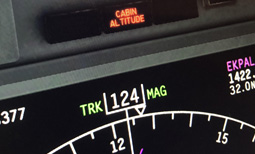 |
| Cabin Crew | Cabin crew members are responsible for passenger safety, comfort, and in-flight services. Their duties include safety briefings, emergency procedures, first aid assistance, and hospitality services such as food and beverage distribution. They are trained to handle various situations, including medical emergencies and security threats, ensuring a safe and comfortable journey for all passengers. |  |
| Cabin Pressure | Cabin pressure is the controlled air pressure maintained inside an aircraft to ensure passenger and crew safety at high altitudes. It prevents hypoxia by simulating a lower altitude environment, typically around 6,000–8,000 feet, even when cruising above 35,000 feet. Pressurization systems regulate oxygen levels and air circulation, ensuring a comfortable and safe cabin atmosphere throughout the flight. | 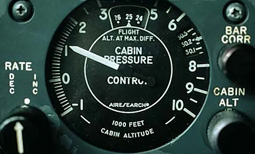 |
| Calibrated Airspeed | Calibrated airspeed (CAS) is indicated airspeed corrected for instrument and position errors. It provides a more accurate measurement of an aircraft's true aerodynamic performance, especially during different phases of flight. At low speeds and in high angles of attack, errors in indicated airspeed can be significant, making CAS crucial for precise flight planning, performance calculations, and regulatory compliance in aviation operations. | 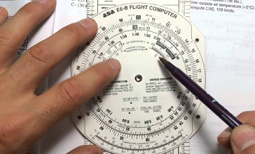 |
| Camber | Camber is the curvature of an airfoil’s surface, particularly its upper and lower contours, which significantly influence aerodynamic properties, including lift and drag. A higher camber produces greater lift, making it advantageous for slower aircraft, while a lower camber is common in high-speed designs. Aircraft designers adjust camber to optimize performance based on speed, efficiency, and maneuverability requirements. | 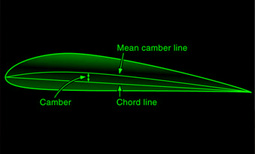 |
| Canard | A canard is a small forward wing located ahead of the main wing, commonly used to improve stability, control, and lift efficiency. Canard configurations reduce stall risks, enhance maneuverability, and contribute to aerodynamic efficiency by balancing the aircraft’s center of lift and gravity. Many modern fighters, experimental aircraft, and some commercial designs utilize canards for improved performance and efficiency. | 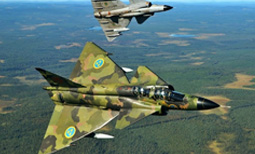 |
| Cargo Door | A cargo door is a large, reinforced opening on an aircraft designed for the loading and unloading of freight, baggage, and oversized cargo. These doors are commonly found on cargo planes and some commercial jets with dedicated cargo compartments. They often feature hydraulic or electric mechanisms for easy operation and secure locking to maintain pressurization. | 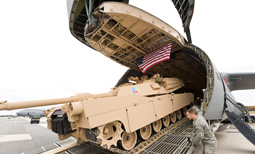 |
| Cargo Hold | The cargo hold is the compartment of an aircraft designated for storing luggage, freight, and other goods during flight. Located beneath the passenger cabin in commercial airliners, it is equipped with secure restraints, temperature control systems for sensitive cargo, and pressurization when necessary. Proper weight distribution in the cargo hold is essential for maintaining the aircraft’s center of gravity and ensuring safe flight operations. | 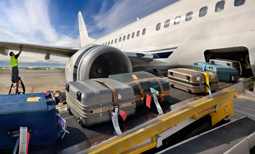 |
| Ceiling | Ceiling refers to the maximum altitude at which an aircraft can sustain level flight under standard atmospheric conditions. It is influenced by engine power, aerodynamic efficiency, and air density. Different types of ceilings exist, such as service ceiling (where climb rate drops below 100 feet per minute) and absolute ceiling (the highest altitude an aircraft can reach and maintain level flight). |  |
| Center of Gravity (CG) | The center of gravity (CG) is the precise point where an aircraft’s weight is evenly balanced in all directions. It is a critical factor in flight stability, control, and overall performance. Aircraft designers and pilots must carefully manage CG to ensure safe operations, as shifts in CG can affect maneuverability, stall characteristics, and fuel efficiency. Proper loading and fuel distribution help maintain an optimal CG throughout flight. | 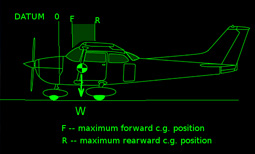 |
| Centerline | The centerline is the longitudinal axis of an aircraft or runway, serving as a reference for alignment and navigation. Pilots use runway centerlines for precise takeoffs and landings, while aircraft designers ensure weight distribution along the centerline for stability. Proper alignment with the centerline improves safety, reduces drift, and ensures smooth flight operations. | 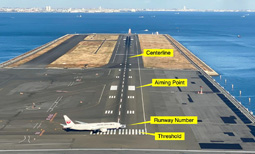 |
| Chine | A chine is a longitudinal edge or ridge found on the fuselage of certain aircraft, particularly those with high-speed or seaplane designs. It enhances aerodynamic performance by controlling airflow and improving lift characteristics. In seaplanes, chines help deflect water spray, improving takeoff and landing efficiency on water. Some supersonic aircraft, such as the SR-71 Blackbird, use chines to generate additional lift and stability at high speeds. | 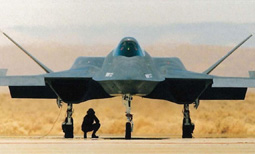 |
| Chord Line | The chord line is an imaginary straight line that extends from the leading edge to the trailing edge of an airfoil. It is a fundamental reference in aerodynamics, used to define the shape and angle of attack of a wing or blade. The chord line helps determine lift generation, stall characteristics, and aerodynamic efficiency. Understanding the chord line is essential for designing efficient airfoils and optimizing aircraft performance. | 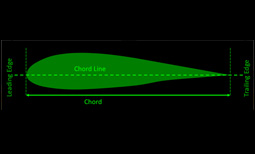 |
| Circuit Breaker | A circuit breaker is an essential safety device in an aircraft’s electrical system that automatically interrupts the flow of current in case of an overload or short circuit. This prevents damage to avionics, flight control systems, and other electrical components. Pilots and maintenance crews monitor circuit breakers to ensure operational safety, as resetting a tripped breaker mid-flight requires careful assessment of the cause. | 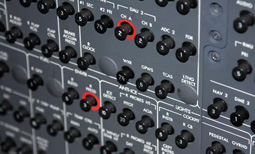 |
| Clamshell Door | A clamshell door is a type of hinged aircraft door design commonly used in cargo planes, military transport aircraft, and some passenger jets. It consists of two sections that swing open like a clamshell, allowing for efficient loading and unloading of cargo. This design maximizes accessibility and enables the transportation of oversized equipment, vehicles, and palletized freight while maintaining the aircraft’s structural integrity. | 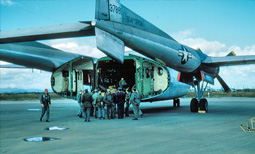 |
| Climb Rate | Climb rate is the vertical speed at which an aircraft gains altitude, typically measured in feet per minute (FPM). It is influenced by engine power, aerodynamics, weight, and atmospheric conditions. Pilots monitor climb rate to optimize fuel efficiency, ensure safe obstacle clearance, and comply with air traffic control instructions. A high-performance aircraft may have a rapid climb rate, while larger, heavier planes require a more gradual ascent. | 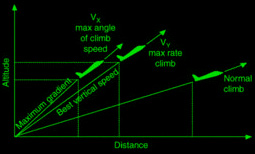 |
| Cloud Base | Cloud base refers to the lowest altitude at which clouds are present, significantly impacting visibility, approach procedures, and overall flight planning. Pilots rely on cloud base measurements to determine whether they can conduct visual or instrument approaches. Lower cloud bases may require instrument flight rules (IFR) operations, while higher cloud bases allow for safer visual navigation. | 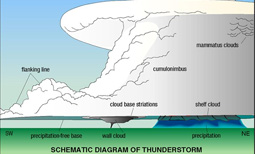 |
| Cockpit | The cockpit is the control center of an aircraft, where pilots and crew manage flight operations, navigation, and system monitoring. It contains essential flight instruments, avionics, communication systems, and controls such as the yoke or sidestick. Modern cockpits utilize glass cockpit technology with digital displays, while older aircraft rely on analog gauges. Proper ergonomics and design ensure efficiency, safety, and ease of operation during all phases of flight. | 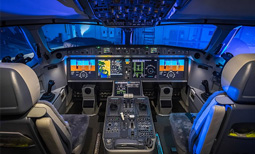 |
| Cockpit Voice Recorder (CVR) | A device that records audio from the cockpit during flight, aiding in accident investigations and safety analysis. | 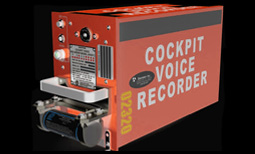 |
| Compressor Stall | A compressor stall occurs when the smooth airflow through a jet engine's compressor is disrupted, causing a sudden loss of thrust and potential engine damage. This can be triggered by abrupt throttle changes, excessive angles of attack, or foreign object ingestion. Compressor stalls may result in loud bangs, vibrations, and flameouts, requiring immediate corrective action by pilots to prevent further damage and restore normal engine function. | 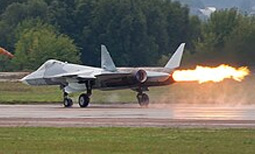 |
| Control Column | The control column, also called the yoke or stick, is the primary flight control device in an aircraft cockpit. It allows pilots to control pitch (nose-up and nose-down) through elevator movement and roll (left and right banking) via ailerons. Proper use of the control column ensures smooth handling, precise maneuvers, and overall flight stability. |  |
| Control Surface | Control surfaces are movable aerodynamic devices that pilots use to manage an aircraft’s attitude and direction. These include ailerons for roll control, elevators for pitch control, and rudders for yaw control. Flaps and slats also assist with lift and drag control during takeoff and landing. Proper coordination of control surfaces ensures stability, maneuverability, and precise handling throughout flight. | 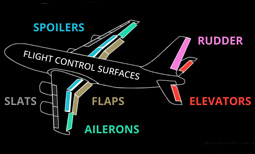 |
| Course | A course is the intended flight path of an aircraft, defined by specific headings, navigation waypoints, and radio beacons. It is determined using onboard navigation systems, such as GPS, VOR, and flight management computers. Pilots must continuously adjust the aircraft’s heading to maintain the correct course, accounting for wind drift and other external factors. | 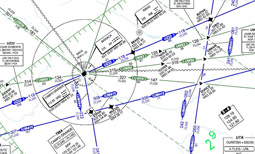 |
| Crew Resource Management (CRM) | Crew Resource Management (CRM) is a structured training approach that enhances communication, teamwork, and decision-making among flight crew members. It helps pilots and cabin crew effectively handle emergencies, workload distribution, and situational awareness. CRM reduces human errors by emphasizing collaboration, leadership, and structured problem-solving, ultimately improving overall flight safety and operational efficiency. | 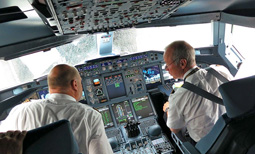 |
| Critical Angle of Attack | The critical angle of attack is the maximum angle between the relative airflow and an airfoil before aerodynamic stall occurs. When exceeded, smooth airflow over the wing is disrupted, causing a rapid loss of lift. Understanding this angle is vital for safe flight operations, especially during takeoff, landing, and maneuvering in high-performance aircraft. | 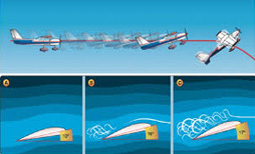 |
| Crosswind | A crosswind is wind that blows perpendicular to an aircraft’s flight path or runway, significantly impacting takeoff, landing, and overall stability. Pilots must use specialized techniques, such as crabbing or slipping, to maintain directional control in strong crosswinds. Excessive crosswinds can make landing hazardous, requiring pilots to divert to alternate runways or airports with better wind alignment. |  |
| Cruise | The cruise phase of flight occurs when an aircraft reaches a stable altitude and speed, optimizing fuel efficiency and range. During cruise, pilots monitor engine performance, weather conditions, and fuel consumption while air traffic control provides navigation updates. This phase is crucial for long-haul flights, where fuel efficiency and passenger comfort are prioritized over rapid speed or maneuverability. | 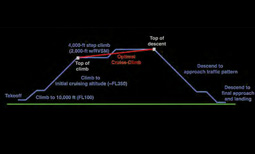 |
